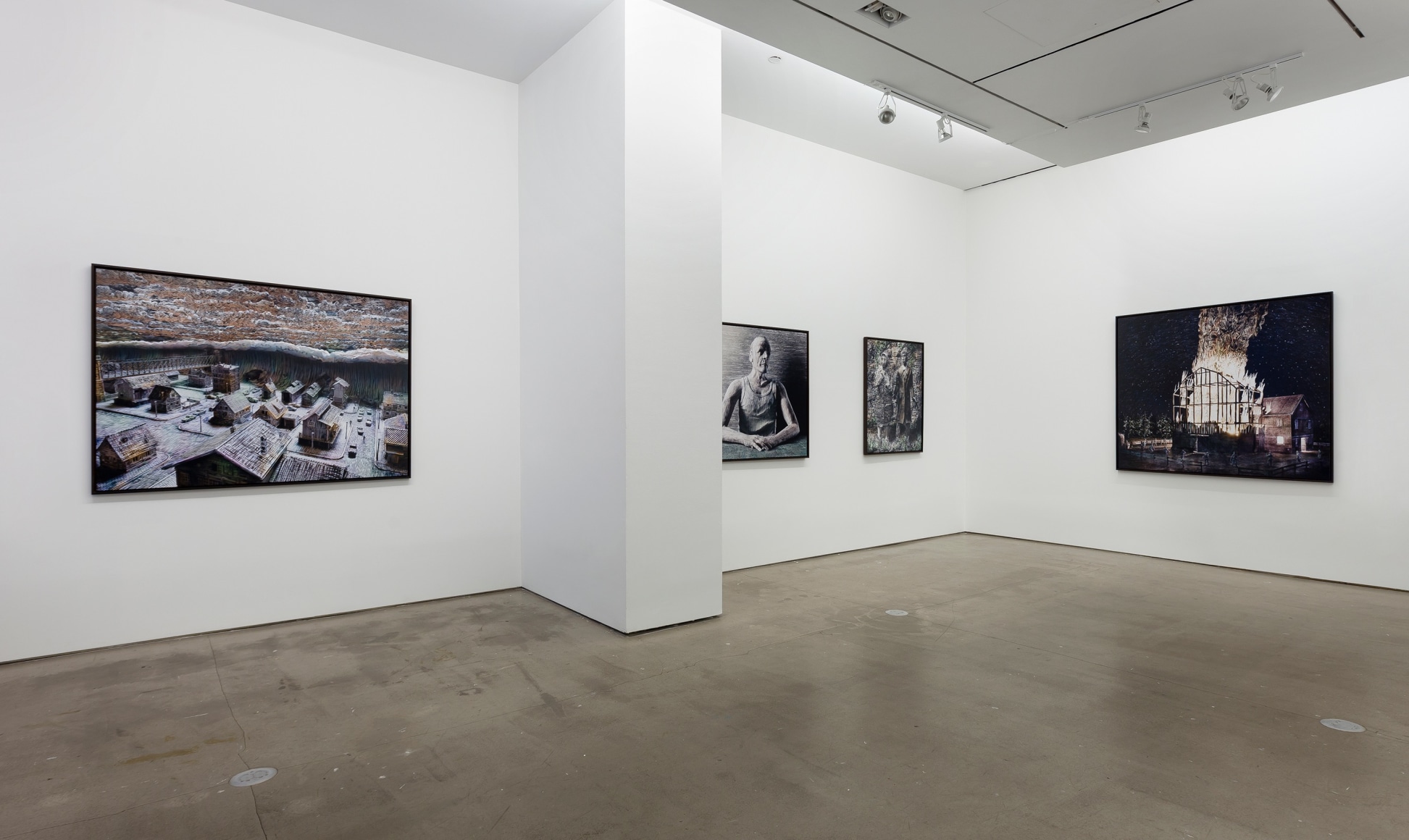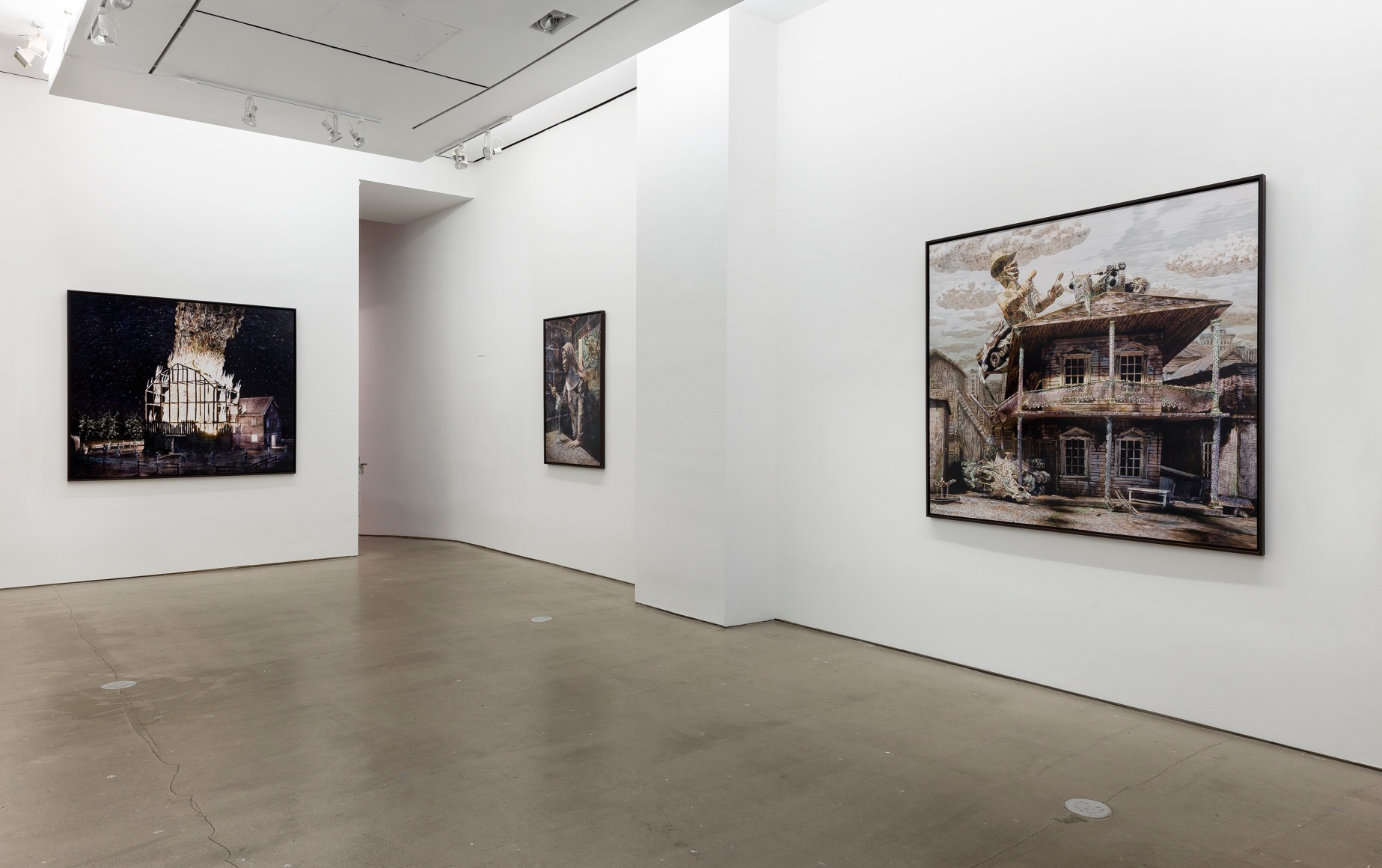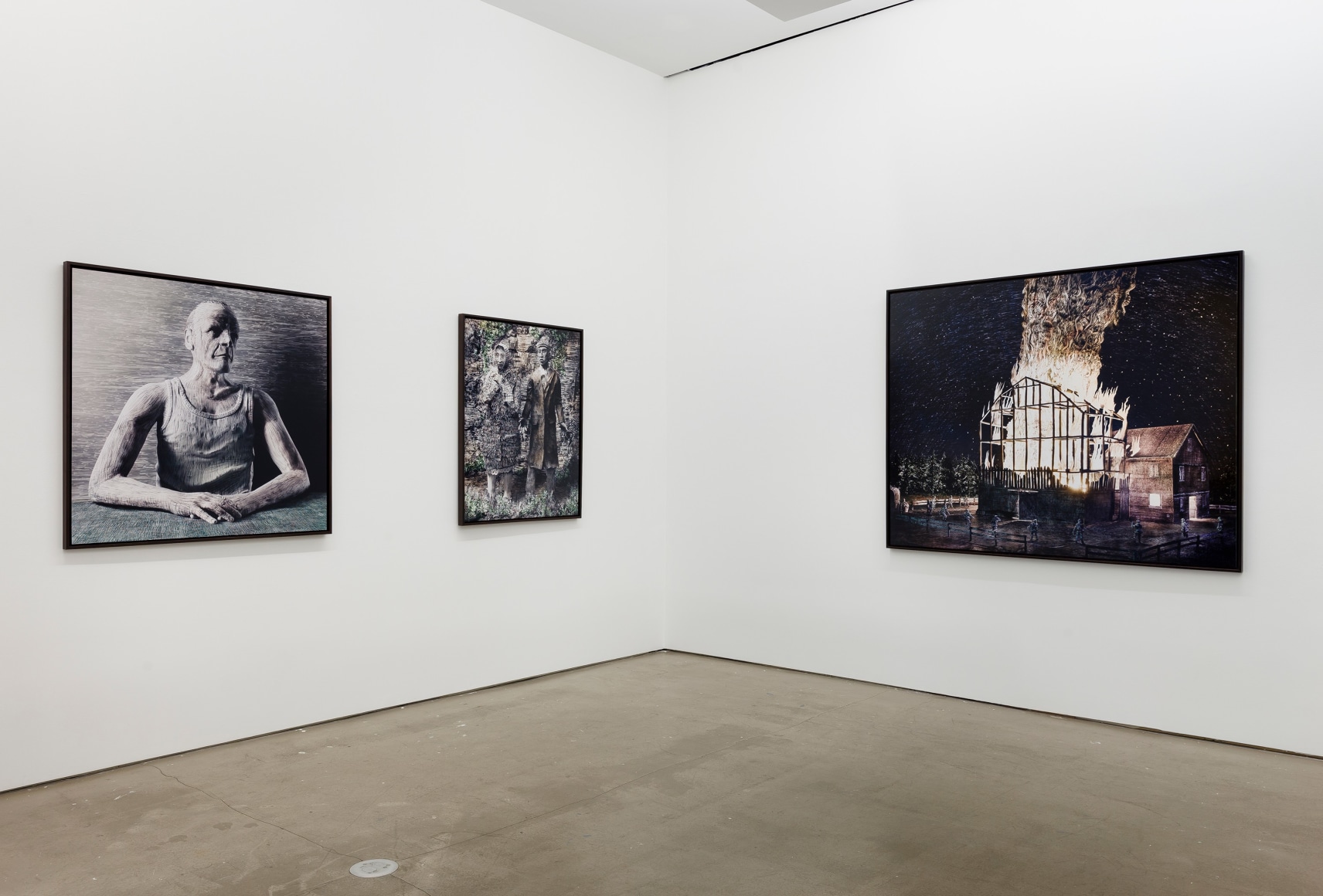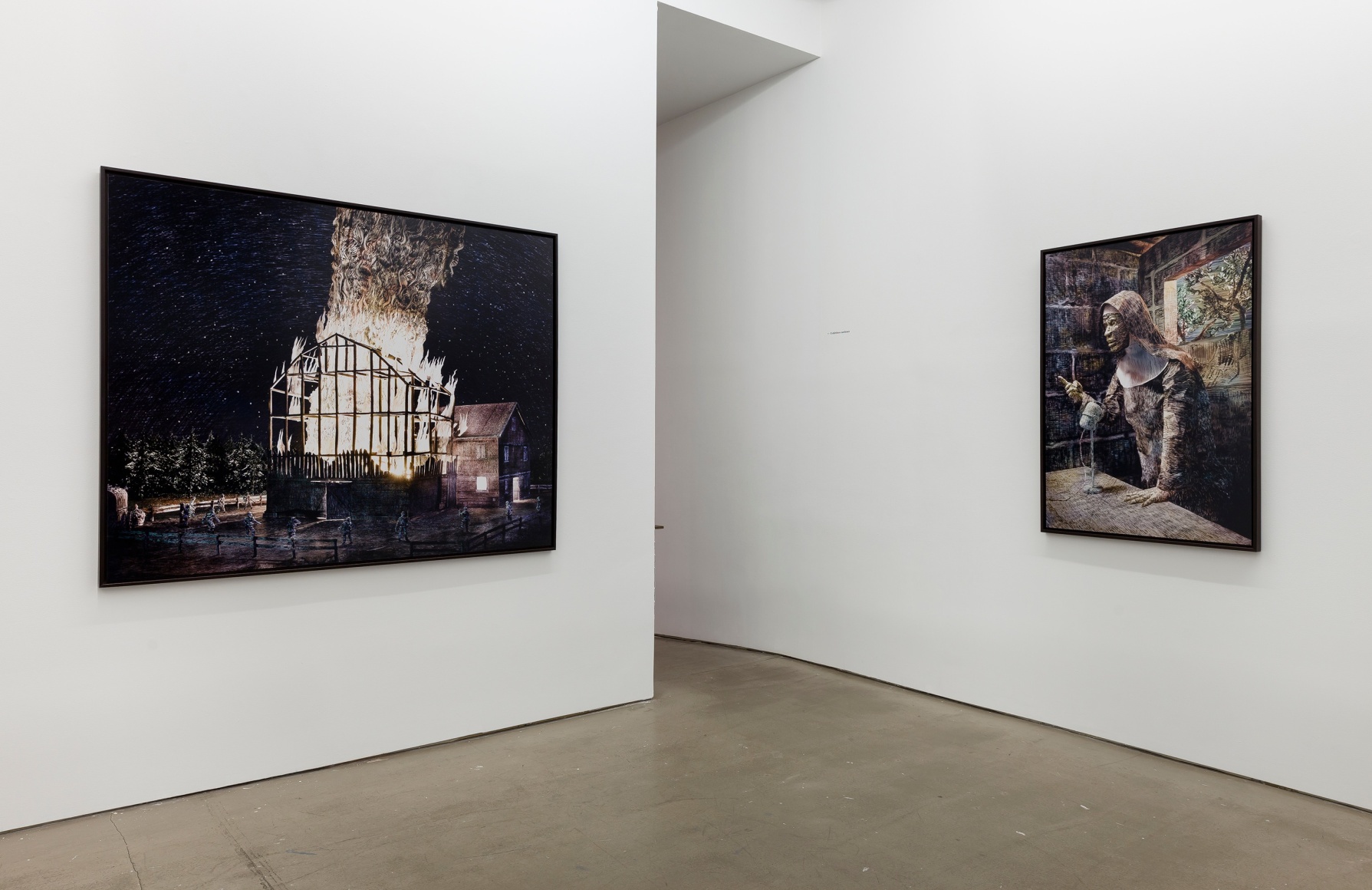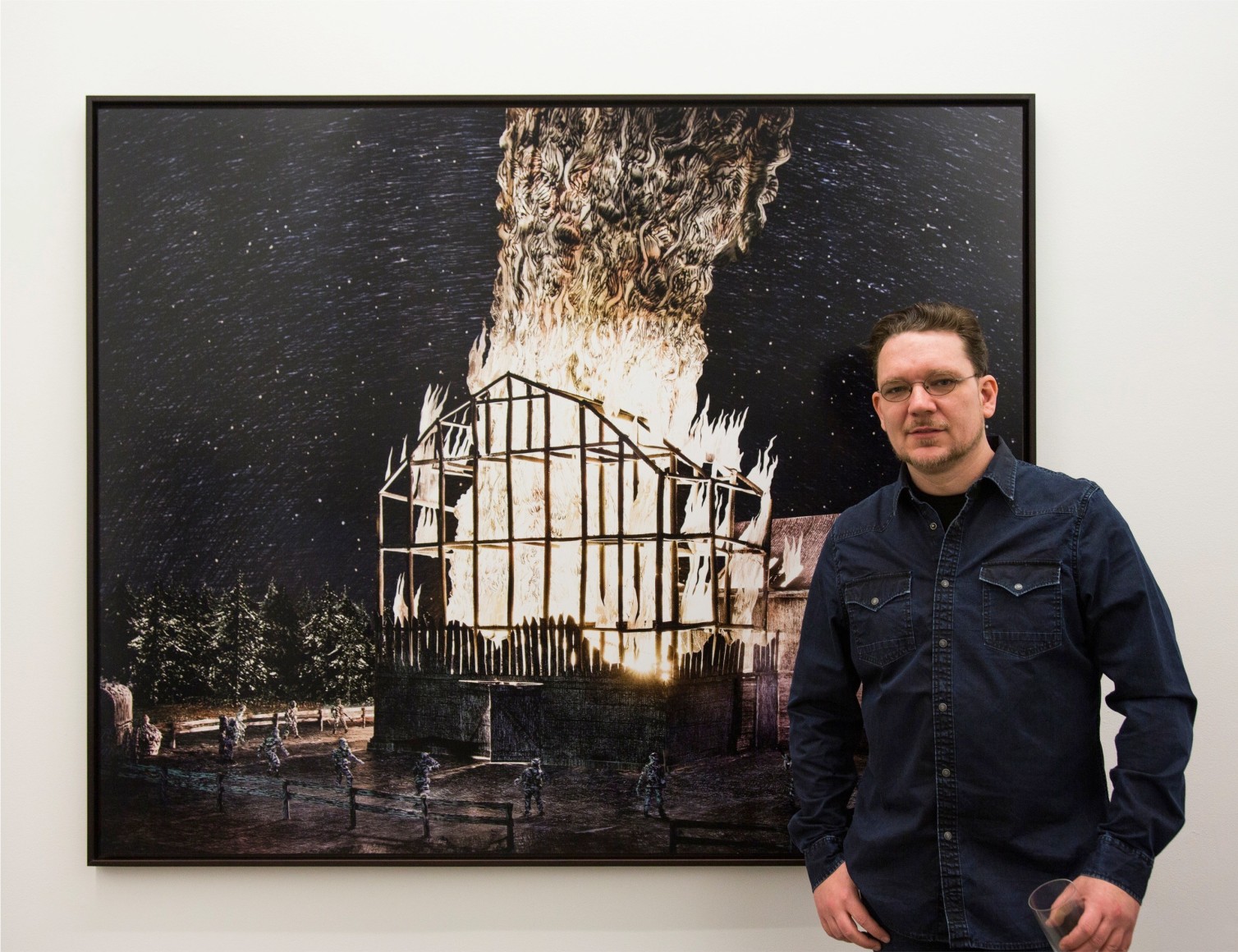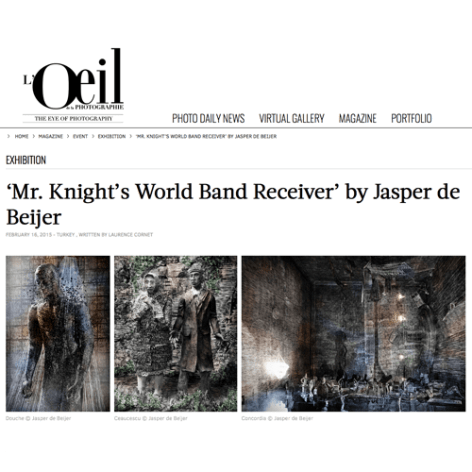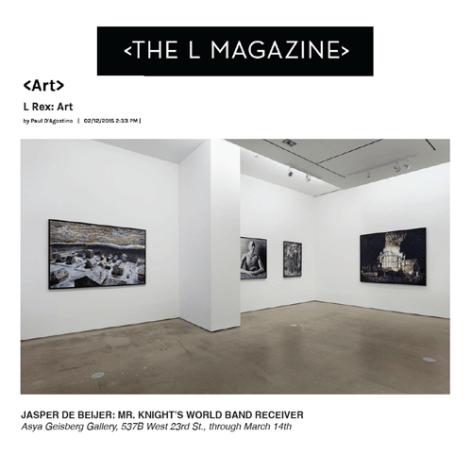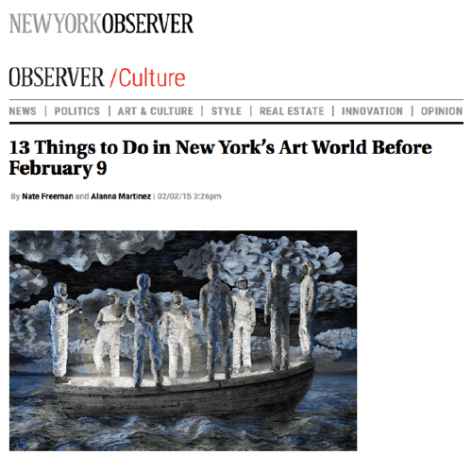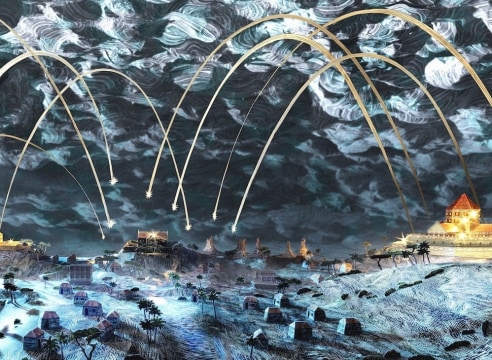
Asya Geisberg Gallery is pleased to present Jasper de Beijer’s photographic series Mr. Knight’s World Band Receiver. In his newest series, de Beijer adopts the visual detachment of an infamous hermit by recreating important historical events from his viewpoint. MKWBR is the twelfth conceptual project in the artist’s oeuvre, which continually probes various modes of historical media representation. In each series, de Beijer begins with scale models sculpted from collaged hand-drawn materials, forming a unique combination of drawing, sculpture and photography. Whether about Dutch colonialism in the East Indies, the English Industrial Revolution, or the Mexican drug war, de Beijer’s work remains true to each series’ specific point of view.
MKWBR is inspired by the true story of Christopher Knight, who disappeared into the remote woods of Maine for twenty-seven years. He avoided any contact with the outside world, having only a radio as his source of information. Knight’s imagination was untouched by visual media, and de Beijer tries to approximate this tabula rasa by relying on his own subjective perception of news events such as Chernobyl and Hurricane Katrina, avoiding his usual methodical research and instead using his memories to create an alternate version of reality.
De Beijer’s scenes contain varying degrees of slippage with our own, media-saturated memories. This distance pushes his images into the realm of folklore or archetype, feeling familiar yet not quite accurate, as if a child has drawn his dreams. In “2-28-1993”, which envisions the conflagration at Waco, TX, the trees are more Brothers Grimm than Texan, and the night sky captures the mix of precision and crudeness that perfectly captures a solitary person’s hyper-focus. The flames leap out in a cartoonishly menacing way, and the building itself is a vague symbol rather than a specific place.
Responding to Knight’s echo-chamber of only living in his imagination, de Beijer re-enacts his failure to live in the world as it is, or rather as it is represented, and tries, perhaps in vain, to steer us to a wistful place where we sit around a fire and envision tales told by poets and adventurers. Knowing that unlike Christopher we can never erase being sullied by visual saturation, de Beijer nonetheless points to the power of images that occur as much in our personal interpretation as in the iconic reiterations of our media-deluged era.

